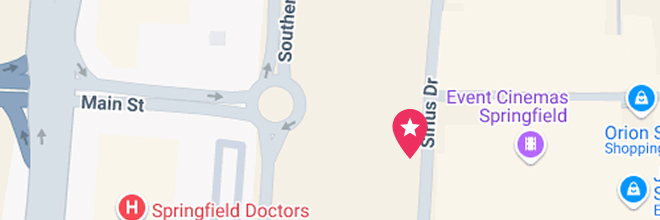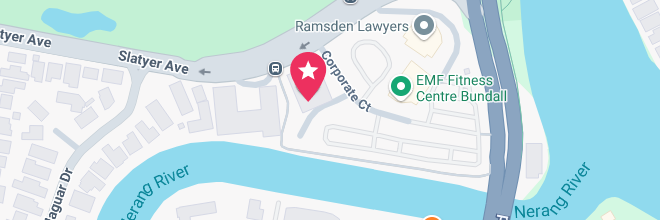Our Brisbane CBD Office
- Suite 400, Level 4/288 Edward St, Brisbane City QLD 4000
- (07) 3910 5470




The most dangerous jobs in Australia include roles in agriculture, transport, construction, and manufacturing — industries with the highest rates of workplace accidents, injuries, and fatalities. These high-risk occupations often involve heavy machinery, unpredictable environments, or demanding physical labour, which significantly increases the chance of harm on the job.
Each year, Safe Work Australia publishes national injury and fatality data that shows where the most serious workplace incidents are happening. Consistently, Queensland records a high number of incidents in these dangerous industries — particularly among truck drivers, farm workers, construction labourers, and machine operators. These jobs aren’t just physically intense; they often come with long hours, environmental hazards, or exposure to high-risk tasks like working at heights or handling chemicals.
This blog explores Australia’s most dangerous jobs by looking at the latest workplace accident statistics, fatality rates, and injury trends. We’ll break down which roles are most affected in Queensland, what types of incidents occur most often, and why some jobs continue to top the high-risk list despite safety improvements.
The most dangerous jobs in Australia are consistently found in industries like transport, agriculture, construction, and manufacturing. These sectors regularly report the highest numbers of workplace accidents, serious injuries, and fatalities. According to Safe Work Australia, the roles that top the list for risk are not necessarily the ones people think of first — they’re often jobs that involve routine exposure to hazards over long hours.
Agricultural workers: Farmers, stock handlers, and shearers face risks from heavy machinery, large animals, extreme weather, and isolation.
Truck drivers: Long-distance freight and delivery drivers account for a significant portion of job-related fatalities due to fatigue, vehicle accidents, and loading hazards.
Construction labourers: Regular exposure to heights, power tools, and unstable structures places them high on the injury risk scale.
Machine operators and drivers: Especially in mining and logistics, these workers are at high risk due to the machinery they operate daily.
Tradies and electricians: These jobs involve constant physical work, often in unpredictable environments where injuries can occur from falls, tools, or electricity.
High physical demand and fatigue
Exposure to dangerous equipment or environments
Poor visibility or lighting in work zones
Time pressure and production targets
Remote work locations with limited emergency access
Each of these roles involves hazards that, if not properly managed, lead to a higher likelihood of workplace injuries and deaths. In the next section, we’ll focus specifically on which Queensland industries are most affected by these risks.
In Queensland, several industries consistently record high numbers of workplace injuries and fatalities. Based on recent data from Safe Work Australia and QLD-specific reports, the following jobs stand out for their risk levels:
| Occupation | Why It’s High Risk | Common Incidents |
|---|---|---|
| Truck Drivers | Long hours, fatigue, and highway crashes are major contributors. | Vehicle collisions, manual handling injuries |
| Farm Workers | Isolated work, machinery, and unpredictable animals/environmental factors. | Tractor rollovers, crush injuries |
| Construction Workers | Working at heights, operating tools, and site hazards are everyday risks. | Falls, tool injuries, structural collapses |
| Mining Machine Operators | Heavy equipment and underground environments present constant risk. | Equipment malfunctions, entrapment |
| Warehouse & Freight Workers | Pressure to meet quotas can lead to corners being cut on safety. | Overexertion, forklift accidents |
| Electricians | Exposure to live wires, confined spaces, and rooftop work. | Electrocution, falls |
| Public Safety Workers (e.g. paramedics, police) | High-stress, unpredictable environments. | Assaults, vehicle crashes, lifting injuries |
These jobs are common across both regional and metro Queensland.
They often combine physical strain, hazardous tools or vehicles, and environmental unpredictability.
Workers in these roles are more likely to make a work injury claim or seek workers compensation due to the high rates of serious incidents.
The most dangerous jobs in Australia are those with the highest rates of workplace accidents, serious injuries, and fatalities. Each year, Safe Work Australia releases updated job injury statistics that show just how common these incidents are — especially in high risk jobs across Queensland, where manual labour and machinery are part of everyday work.
In 2023, there were 200 work-related fatalities in Australia, translating to a fatality rate of 1.4 deaths per 100,000 workers. While the overall trend is declining compared to a decade ago, workers in certain roles still face much higher risks of injury or death.
| Industry | Fatality Rate (per 100,000 workers) | Common Causes |
|---|---|---|
| Agriculture, Forestry & Fishing | 10.4 | Tractor rollovers, animal-related injuries |
| Transport, Postal & Warehousing | 7.9 | Road crashes, loading and unloading incidents |
| Construction | 2.1 | Falls from height, struck by objects |
| Manufacturing | 1.8 | Equipment malfunction, repetitive strain |
| Mining | 1.5 | Machinery entrapments, underground hazards |
| All Industries (National Average) | 1.4 | Mixed |
These statistics show that the jobs with the highest workplace fatalities are typically in sectors involving heavy machinery, high-risk environments, or long and irregular shifts.
| Occupation Type | Deaths per 100,000 Workers | Risk Factors |
|---|---|---|
| Machinery Operators & Drivers | 8.2 | Fatigue, long-haul driving, vehicle collisions |
| Labourers | 2.9 | Heavy lifting, site hazards, equipment use |
| Technicians & Trades Workers | 1.2 | Electrical risks, heights, manual tools |
| Community & Personal Services | 0.9 | Manual handling, violence, fatigue |
| Clerical & Administrative | 0.2 | Low physical risk, office-based roles |
While fatality rates help show the most severe outcomes, serious injury claims are a better indicator of how often workplace accidents happen. In Queensland:
The serious injury claim rate rose to 13.2% in 2022–23, up from 12.9% the year prior.
That means more than 1 in 8 serious incidents led to extended time off work or long-term treatment.
This reflects the reality that even non-fatal injuries in dangerous jobs can have lasting physical, emotional, and financial impacts.
Across Australia, the most common causes of workplace accidents in dangerous jobs include:
Vehicle crashes, especially in freight and logistics
Falls from scaffolding, ladders, or platforms
Being struck by moving objects or machinery
Muscle strain from lifting or repetitive tasks
Machinery entrapments due to poor training or maintenance
These incidents are especially frequent in roles that involve high-speed environments, dangerous equipment, or remote work — making safety planning critical.
The most dangerous jobs in Australia often expose workers to environments where accidents are more likely to happen — and when they do, the outcomes are frequently serious. These roles involve a combination of physical demands, hazardous equipment, and unpredictable conditions, all of which contribute to a high rate of workplace accidents and serious injuries.
According to Safe Work Australia and QLD injury reporting, the most common workplace accidents in high-risk industries typically fall into the following categories:
These are the leading cause of workplace fatalities, especially in the transport, warehousing, and agriculture sectors.
Long-haul truck drivers are at high risk due to fatigue, speeding, and highway collisions.
Forklift and loading bay accidents are also frequent in warehouses.
Quad bikes and tractors cause a large number of injuries on farms.
In construction, mining, and maintenance work, falls remain one of the top causes of hospitalisation and death.
Common in roofing, scaffolding, and ladder work.
Often caused by failure to use fall protection or unstable working platforms.
Contact with moving machinery can lead to crush injuries, amputations, and fatalities.
High-risk in manufacturing, agriculture, and mining.
Frequently involves poorly guarded machinery or lack of emergency stop mechanisms.
Construction sites see frequent incidents involving falling tools, building materials, or swinging equipment.
In manufacturing, moving parts or items on conveyor belts pose serious threats.
These injuries account for a large proportion of job injury statistics — particularly in health care, construction, and warehousing.
Lifting, pushing, pulling or carrying loads improperly.
Causes musculoskeletal disorders, long-term back pain, and shoulder injuries.
Often underestimated, these are frequent causes of injury in retail, hospitality, and healthcare.
Wet surfaces, loose cords, or poor lighting are key contributors.
While not usually fatal, they result in a high number of time-loss injuries.
Common in industries like mining, chemical manufacturing, and cleaning services.
Involves inhalation of toxic fumes, chemical burns, or long-term respiratory damage.
Often occurs due to inadequate PPE or lack of training.
| Accident Type | High-Risk Industries Affected | Typical Outcomes |
|---|---|---|
| Vehicle collisions | Transport, Agriculture, Mining | Fatalities, crush injuries |
| Falls from heights | Construction, Maintenance, Mining | Broken bones, spinal injuries, fatalities |
| Machinery entrapments | Manufacturing, Agriculture, Logistics | Amputations, crush injuries |
| Being struck by objects | Construction, Warehousing | Head injuries, fractures |
| Manual handling strain | Healthcare, Construction, Warehousing | Back injuries, soft tissue damage |
| Slips, trips and falls | Retail, Hospitality, Healthcare | Sprains, fractures |
| Chemical exposure | Mining, Cleaning, Industrial cleaning | Burns, lung damage |
Some jobs are inherently more dangerous — not just because of the tools or environments involved, but due to how the work is structured, where it’s performed, and the demands placed on workers. Despite safety standards improving over the years, high risk jobs in Australia still lead the way in workplace accidents and fatal injury statistics, particularly across Queensland.
Here’s why certain roles continue to carry a greater risk:
Jobs that require long hours, heavy lifting, or repetitive tasks wear workers down over time.
Transport workers often drive for 12+ hours, increasing the chance of fatigue-related accidents.
Construction labourers perform strenuous physical tasks in hot, noisy, or unstable environments.
Shift work in industries like healthcare or mining disrupts sleep cycles and slows reaction time.
Keyword targets: most dangerous jobs QLD, high risk occupations, job injury statistics
Many of the most dangerous jobs involve exposure to weather, animals, unstable ground, or confined spaces.
Farmers work with unpredictable animals and machinery in remote areas.
Emergency responders and public safety workers often enter volatile situations.
Outdoor workers in regional QLD face extreme weather and isolation, delaying emergency response.
Despite national WHS laws, some employers still fail to provide appropriate safety systems or training.
Poorly maintained equipment increases the risk of entrapment or malfunction.
Inadequate fall prevention, such as missing harnesses or unstable scaffolding, is common on construction sites.
Lack of PPE in cleaning, manufacturing, or chemical handling jobs leads to unnecessary injuries.
In many industries, workers are pushed to meet strict timeframes, leading to shortcuts and lapses in safety.
Delivery drivers may skip rest breaks to hit quotas.
Warehouse workers may overlook lifting techniques to speed up output.
Contract labourers often feel pressure to perform quickly, regardless of safety rules.
Some high-risk industries have a culture of “just getting on with it,” which discourages incident reporting or proper risk assessments.
Injuries are often not reported until they become serious.
Safety procedures are sometimes ignored or not enforced.
New or young workers may lack the confidence to speak up about unsafe conditions.
Queensland’s diverse economy relies heavily on industries like agriculture, construction, mining, and transport — all of which rank among the most dangerous jobs in Australia. While statistics paint a broad picture, real-world examples from across the state show how workplace accidents and job injury risks play out in day-to-day settings.
In 2022, a farmer near Toowoomba was fatally injured when his tractor rolled on uneven terrain. The incident occurred during routine ploughing work on sloped farmland. Investigations revealed the tractor lacked a rollover protection system — something that is still alarmingly common in parts of rural Queensland.
Risk factor: Agricultural machinery in uneven terrain
Industry: Agriculture, forestry, and fishing
A young apprentice fell two storeys on a commercial building site in Brisbane after a temporary scaffolding platform gave way. Although he survived, he sustained serious spinal injuries. The Work Health and Safety investigation found that safety checks had been skipped to save time.
Risk factor: Falls from height, lack of inspection
Industry: Construction
A long-haul truck driver died in a collision on the Bruce Highway after working back-to-back 14-hour shifts. Driver fatigue was identified as the key cause. The crash also involved another vehicle, highlighting the wider risks of transport-related jobs.
Risk factor: Driver fatigue, long hours, highway transport
Industry: Transport and warehousing
At a coal mine west of Rockhampton, a machinery operator was severely injured when a haul truck reversed unexpectedly due to a brake failure. The site had been flagged weeks earlier for maintenance concerns, but repairs were delayed due to production deadlines.
Risk factor: Equipment failure, production pressure
Industry: Mining
While some roles are more dangerous by nature, many workplace accidents can be prevented with the right systems, training, and awareness. For workers in high risk jobs in Australia, especially those in agriculture, construction, transport, and mining, adopting a proactive safety mindset can make a real difference.
Below are key prevention strategies that help reduce the risk of serious injuries and fatalities across Queensland’s most dangerous jobs.
Every high-risk task should begin with a formal risk assessment. This identifies potential hazards before work starts and allows for proper control measures to be implemented.
Use Safe Work Method Statements (SWMS) for hazardous tasks.
Update procedures regularly to reflect new tools, techniques, or risks.
Involve workers in the review process to improve engagement and accuracy.
Fatigue is a top contributor to workplace accidents in transport, mining, and shift-based work.
Enforce rest breaks for drivers, machine operators, and shift workers.
Use rostering software to monitor hours and reduce back-to-back shifts.
Encourage workers to report when they feel unsafe due to tiredness.
Unsafe equipment is a leading cause of injuries in construction, manufacturing, and agriculture.
Conduct daily pre-start checks on all machinery.
Fix issues promptly — don’t delay maintenance due to time pressure.
Provide training on shutdown procedures and emergency stops.
Falls remain a top cause of death in construction and property maintenance.
Use harnesses, guardrails, and secure scaffolding on all elevated work.
Train workers to identify fall hazards and safely use ladders or platforms.
Ensure anchor points and systems are properly rated and certified.
Back injuries and musculoskeletal disorders are common across all manual labour industries.
Train staff in lifting techniques, body positioning, and safe use of trolleys.
Redesign workstations to reduce awkward movements or strain.
Use mechanical aids where possible to minimise load lifting.
High-risk jobs need more than compliance — they need a workplace culture that puts safety first.
Encourage open reporting of near misses and hazards.
Reward safe behaviour, not just productivity.
Train managers and supervisors to lead by example.
What are the most dangerous jobs in Australia?
Transport workers, agricultural labourers, construction workers, machine operators, and miners have the highest rates of workplace accidents and fatalities.
Which job has the highest fatality rate in Queensland?
Truck driving and farming consistently show the highest fatality rates, especially in regional and remote areas of QLD.
What causes most workplace injuries in high-risk jobs?
The main causes include vehicle crashes, falls from height, machinery accidents, and manual handling injuries.
Are workplace fatalities increasing or decreasing in Australia?
Fatalities have decreased overall since 2007, but serious injury rates in high-risk industries like construction and transport remain high.
How can workers in dangerous jobs stay safe?
Following safe work procedures, using protective equipment, reporting hazards, and managing fatigue are key ways to reduce injury risk.
Is construction more dangerous than mining in QLD?
While both are high-risk, construction typically has more falls and struck-by injuries, whereas mining involves more machinery-related accidents.
Do high-risk industries have more compensation claims?
Yes, workers in dangerous industries are far more likely to lodge serious injury or fatality-related compensation claims.
What’s the most common injury in physically demanding jobs?
Back injuries and musculoskeletal disorders from lifting, bending, or repetitive strain are among the most common.
Safe Work Australia – Work-Related Traumatic Injury Fatalities Report
A detailed national report showing fatality rates by industry, occupation, and cause.
https://www.safeworkaustralia.gov.au/doc/work-related-traumatic-injury-fatalities-australia-2023
WorkSafe Queensland – Industry Injury Data
State-level insights into injury claims, serious incident statistics, and high-risk industries.
https://www.worksafe.qld.gov.au/statistics
Queensland Government – Workplace Health and Safety Laws
Overview of employer obligations, worker rights, and safety duties under QLD legislation.
https://www.business.qld.gov.au/running-business/employing/safety-laws
Kathryn is Trilby Misso’s Chief Executive Officer.
Meet KathrynUse this simple online tool and find out if you have a claim in less than thirty seconds. You can choose to remain anonymous.
Your next step is a small one. All you need to do is give us a call on 07 3910 5470 or complete this form here to arrange a quick chat.
During this initial conversation, we will:

We understand that taking legal action can be stressful, and we’ll do all we can to ease your concerns.
The chat can take place at our place, your place, or by phone. There is no cost, no pressure, and no obligation.
Call 07 3910 5470 or fill out this form, and we’ll get back to you within 2 hours (during business hours). We look forward to meeting you.
enquire now